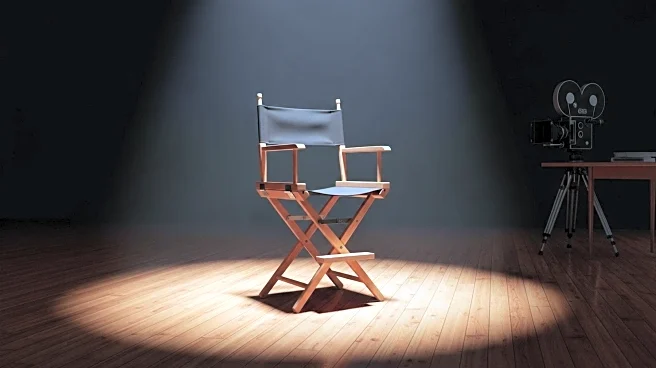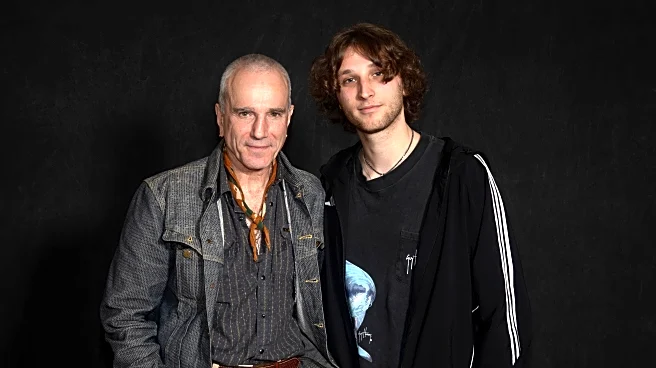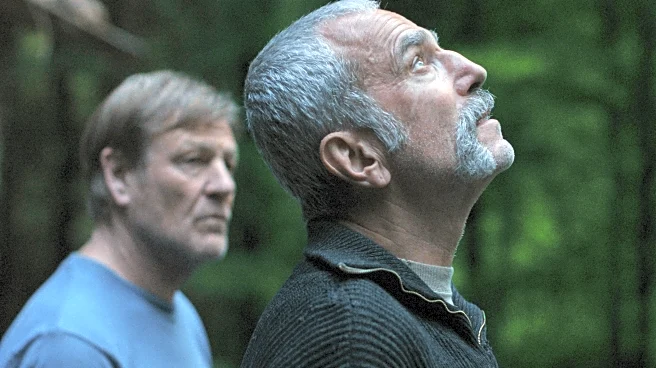What's Happening?
Daniel Day-Lewis, renowned for his intense performances and method acting, has returned to the big screen after an eight-year retirement. His comeback is marked by the film 'Anemone,' directed by his son, Ronan Day-Lewis. The film, which premiered at the New York Film Festival, features Day-Lewis as Ray Stoker, a hermit living in isolation. The storyline revolves around familial relationships, with Sean Bean playing his brother Jem. Day-Lewis had previously retired to explore other interests, including violin making, but found himself drawn back to acting through this collaborative project with his son. The film's production was initially intended to be a small-scale endeavor but evolved into a full feature film, reigniting Day-Lewis's passion for acting.
Why It's Important?
Daniel Day-Lewis's return to acting is significant for the film industry, given his status as one of the most acclaimed actors of his generation. His involvement in 'Anemone' not only highlights the potential for familial collaboration in filmmaking but also underscores the enduring appeal of method acting, despite its controversial reputation. The film's release could influence future projects, encouraging actors and directors to explore personal and intimate storytelling. Additionally, Day-Lewis's return may inspire other retired actors to reconsider their hiatus, potentially enriching the industry with experienced talent.
What's Next?
Following the release of 'Anemone,' Daniel Day-Lewis may continue to explore acting opportunities, especially those that offer creative collaboration with family or close associates. The film's reception could lead to further projects that blend personal narratives with professional expertise. As Day-Lewis has expressed a renewed interest in acting, industry observers will be keen to see if he announces new roles or ventures into other aspects of filmmaking, such as screenwriting, which he has begun to explore with 'Anemone.'
Beyond the Headlines
The return of Daniel Day-Lewis to acting raises questions about the nature of retirement in creative professions. His experience suggests that artistic expression can be a lifelong pursuit, with periods of rest and exploration serving to rejuvenate rather than conclude a career. This development may prompt discussions on the balance between personal life and professional commitments in the arts, as well as the impact of familial relationships on creative output.











